Hyundai’s rise in the global automotive market is nothing short of remarkable. Once dismissed as a budget-friendly but underwhelming brand, Hyundai has steadily transformed itself over the past two decades into a serious contender in nearly every vehicle segment, including the highly competitive world of crossovers and SUVs.
With stylish designs, strong warranty coverage, tech-savvy interiors, and increasingly competent engineering, Hyundai has earned the attention and respect of buyers around the globe.
Today, it offers one of the most diverse crossover lineups in the industry, from urban-sized budget models to full-size family haulers loaded with features. However, not all Hyundai crossovers are created equal, and some have quietly exceeded expectations, while others have fallen short of what the badge promises.
In recent years, Hyundai has invested heavily in reshaping its vehicle architecture, design philosophy, and performance identity. The result? A mixed bag of crossover models—some that punch well above their weight, and others that feel stuck in an earlier, less polished era of the brand’s development.
Consumers often assume that all modern Hyundais offer equal levels of refinement, value, and reliability. But as with any automaker that has evolved quickly, there are growing pains. Some of Hyundai’s earlier or niche offerings, despite their ambition, failed to deliver consistently strong performance or real-world satisfaction.
On the other hand, there are models—particularly from the last five years—that have emerged as true market standouts, delivering exceptional value, performance, and quality in ways that surprise even seasoned drivers.
The goal of this article is to take a deeper look at both sides of the Hyundai crossover lineup—specifically, to highlight five Hyundai crossovers that are unexpectedly strong, and five that aren’t as strong as expected.
This is not simply a matter of listing bestsellers or citing spec sheets; rather, it’s an analysis of real-world strengths and weaknesses that influence ownership experience. We consider performance, comfort, technology, design, reliability, and long-term value—attributes that collectively define what makes a crossover successful or underwhelming.
What’s particularly interesting about Hyundai’s crossover evolution is how quickly some models have improved, while others failed to catch on or felt rushed to market. The brand has never lacked ambition, but it has taken time for all elements—design, drivetrain, infotainment, and interior refinement—to come together seamlessly.
As such, some Hyundai crossovers became sleeper hits that outclassed their more famous competitors, while others remained underwhelming despite their promising specifications or futuristic tech. Hyundai is no longer the underdog, but that means expectations are higher than ever.
If you’re considering a Hyundai crossover for your next vehicle—or if you’re just curious about which models live up to the hype—this comprehensive breakdown will help you separate the surprisingly strong from the subtly disappointing.
Whether you’re after performance, practicality, efficiency, or value, understanding where each model truly stands can save you time, money, and long-term regret. Let’s dive into the strongest players in Hyundai’s crossover lineup—and those that missed the mark.
5 Hyundai Crossovers That Are Unexpectedly Strong
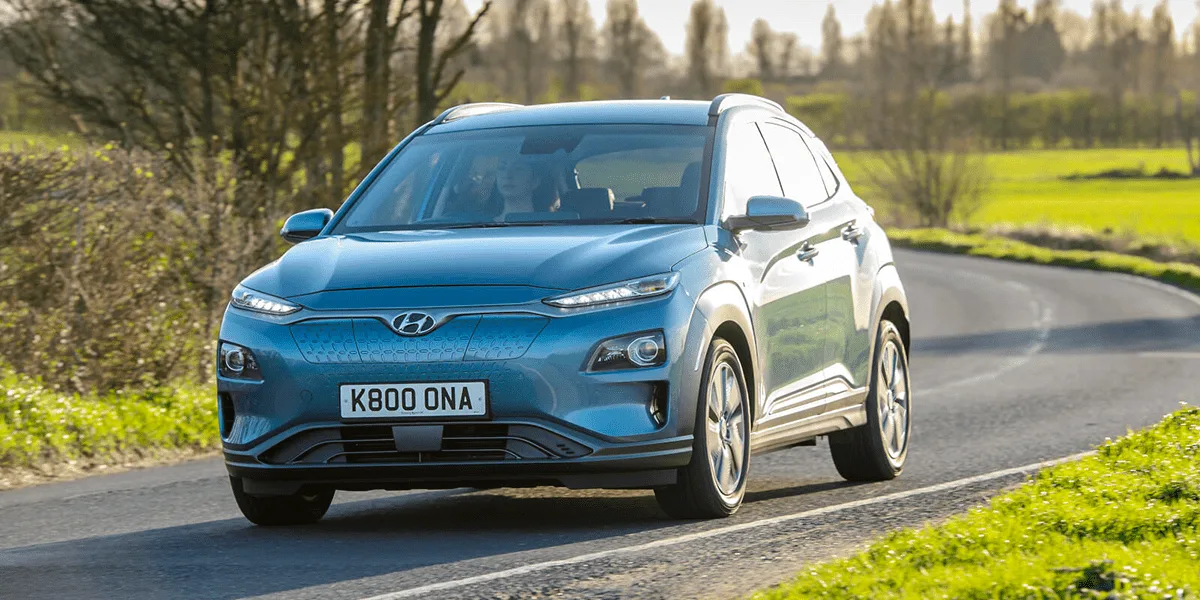
1. Hyundai Kona (First Generation)
When Hyundai first unveiled the Kona in 2017, it was stepping into an already competitive subcompact SUV segment filled with safe, predictable choices. Yet instead of playing it conservatively, Hyundai infused the Kona with a bold design and a surprising sense of personality. With its split headlights, sculpted sides, and funky color palette, the Kona instantly stood out.
But this wasn’t a case of style over substance—the Kona also delivered an unusually fun driving experience for its class. Its available 1.6-liter turbocharged engine, paired with a dual-clutch transmission, made it quicker and more responsive than many rivals. For city dwellers and first-time SUV buyers, it proved that “affordable” didn’t have to mean dull.
The interior was another revelation. While many subcompact SUVs sacrifice comfort and features to keep costs low, the Kona managed to feel more premium than expected. The seats offered good support for long drives, and the cabin layout was intuitive and well-thought-out.
Hyundai’s infotainment system was especially user-friendly, featuring sharp graphics and easy smartphone integration via standard Apple CarPlay and Android Auto. Cabin materials—though not luxury-grade—were better than what most competitors offered, with soft-touch surfaces and confident fit and finish.
What’s more, Hyundai didn’t skimp on safety: even the lower trims came with driver-assistance features like lane-keeping assist and forward collision warning, helping the Kona appeal to younger, safety-conscious drivers and small families alike.
From a long-term ownership perspective, the Kona also scored well. It benefited from Hyundai’s industry-leading 10-year/100,000-mile powertrain warranty, but many owners reported needing it rarely. The Kona has shown good reliability over time, with lower-than-average maintenance costs and consistent performance.
Fuel economy was another plus, with the non-turbo models achieving excellent mileage for their size. In an era when many subcompact SUVs feel like stripped-down hatchbacks on stilts, the Kona came across as a complete, confident crossover. It was unexpectedly strong because it didn’t settle for being “good enough”—it was engaging, well-equipped, and genuinely fun to drive, all while staying within reach of budget-conscious buyers.

2. Hyundai Santa Fe (2020–2022)
The 2020–2022 Hyundai Santa Fe marked a major leap in Hyundai’s crossover design philosophy. This generation arrived as a far more mature, well-rounded midsize SUV than its predecessors, and it quickly earned praise for its refined road manners and upscale feel.
While many buyers might have expected it to be another middle-of-the-road utility vehicle, the Santa Fe proved to be something more, offering an almost premium driving experience in a non-premium package.
Its ride was smooth, quiet, and composed even on rough surfaces, and the optional turbocharged 2.5-liter engine delivered brisk acceleration without sacrificing fuel efficiency. The suspension tuning struck an ideal balance between comfort and control, making long highway journeys and daily commutes equally enjoyable.
Inside, the transformation was even more dramatic. Hyundai outfitted the Santa Fe with one of the most stylish and practical cabins in the segment. High-quality materials, clean design lines, and a floating center console gave it a high-end look typically reserved for more expensive vehicles. It wasn’t just about looks, though—the layout was smart and driver-focused, with easy-to-reach controls, large digital displays, and ample storage.
Features like a panoramic sunroof, ventilated seats, and wireless charging elevated the experience, making the Santa Fe feel like a true competitor to brands like Acura or Lexus, especially in the higher trims. Even base models came generously equipped, reflecting Hyundai’s strategy of overdelivering on value.
One of Santa Fe’s most appealing traits was its family friendliness. It provided ample passenger space in both rows, a well-sized cargo area, and a flat load floor that made packing and unpacking a breeze. Hyundai also incorporated a host of safety technologies as standard, including adaptive cruise control, blind-spot monitoring, and lane-centering assist.
These features weren’t just add-ons—they were thoughtfully integrated and worked seamlessly, boosting confidence for drivers. Additionally, Hyundai’s reputation for reliability and low ownership costs only strengthened the Santa Fe’s case. In short, the 2020–2022 Santa Fe didn’t just meet expectations for a midsize crossover—it exceeded them in nearly every measurable way, making it one of the most unexpectedly strong models in Hyundai’s entire lineup.
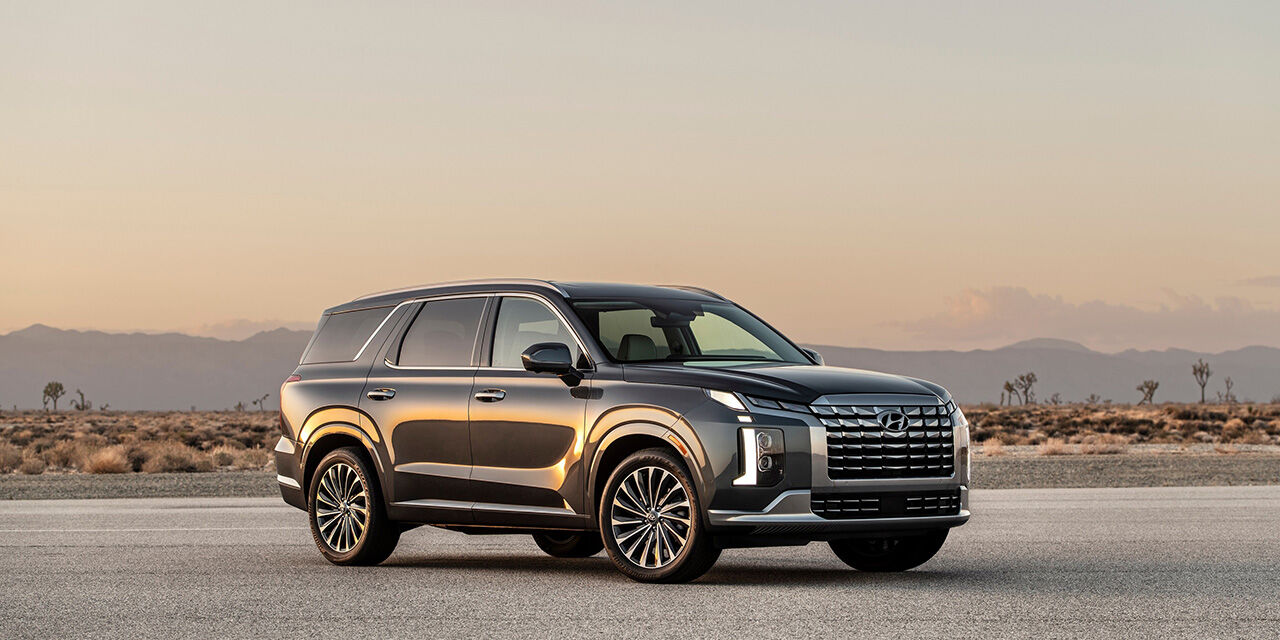
3. Hyundai Palisade (2020–Present)
When Hyundai introduced the Palisade in 2020, many questioned whether the brand could credibly compete in the full-size SUV arena—a space dominated by nameplates like the Toyota Highlander, Ford Explorer, and Honda Pilot. Yet the Palisade not only entered the segment with confidence, it redefined expectations.
This three-row SUV offered a stunning blend of design, comfort, and advanced technology at a price that made rivals look overpriced. The Palisade’s exterior styling was bold and authoritative, featuring a wide grille, crisp LED lighting, and substantial road presence. But its true brilliance was found inside. The cabin was among the most luxurious in its class, featuring quilted leather, ambient lighting, and high-end finishes that rivaled those in vehicles costing $15,000 more.
Comfort was a design priority, and it showed in every row of seating. The Palisade’s second-row captain’s chairs were roomy and supportive, while the third row offered more space than most competitors, making it a true 7- or 8-passenger vehicle rather than a 5+2 compromise.
Practical touches abounded, from USB ports in every row to a unique in-car intercom system that allowed front-seat passengers to speak clearly to those in the back without shouting. These small innovations made a big difference for families. Hyundai also focused on sound insulation, giving the Palisade a hushed cabin even at highway speeds—an experience that felt downright premium compared to its rivals.
On the performance front, the Palisade offered a solid 3.8-liter V6 engine paired with an 8-speed automatic transmission. While not sporty, the powertrain was refined and capable, offering smooth acceleration and confident passing power. Ride quality was excellent, with a suspension setup that soaked up bumps while maintaining composure in corners.
The Palisade’s available all-wheel drive system further enhances its utility for those in colder climates or with active lifestyles. Perhaps most importantly, it consistently earned top marks in safety, with high crash-test ratings and a comprehensive suite of driver aids. All told, the Palisade shocked many by offering the kind of polish and capability expected only from luxury brands, all while maintaining Hyundai’s hallmark value pricing. It didn’t just compete—it dominated.
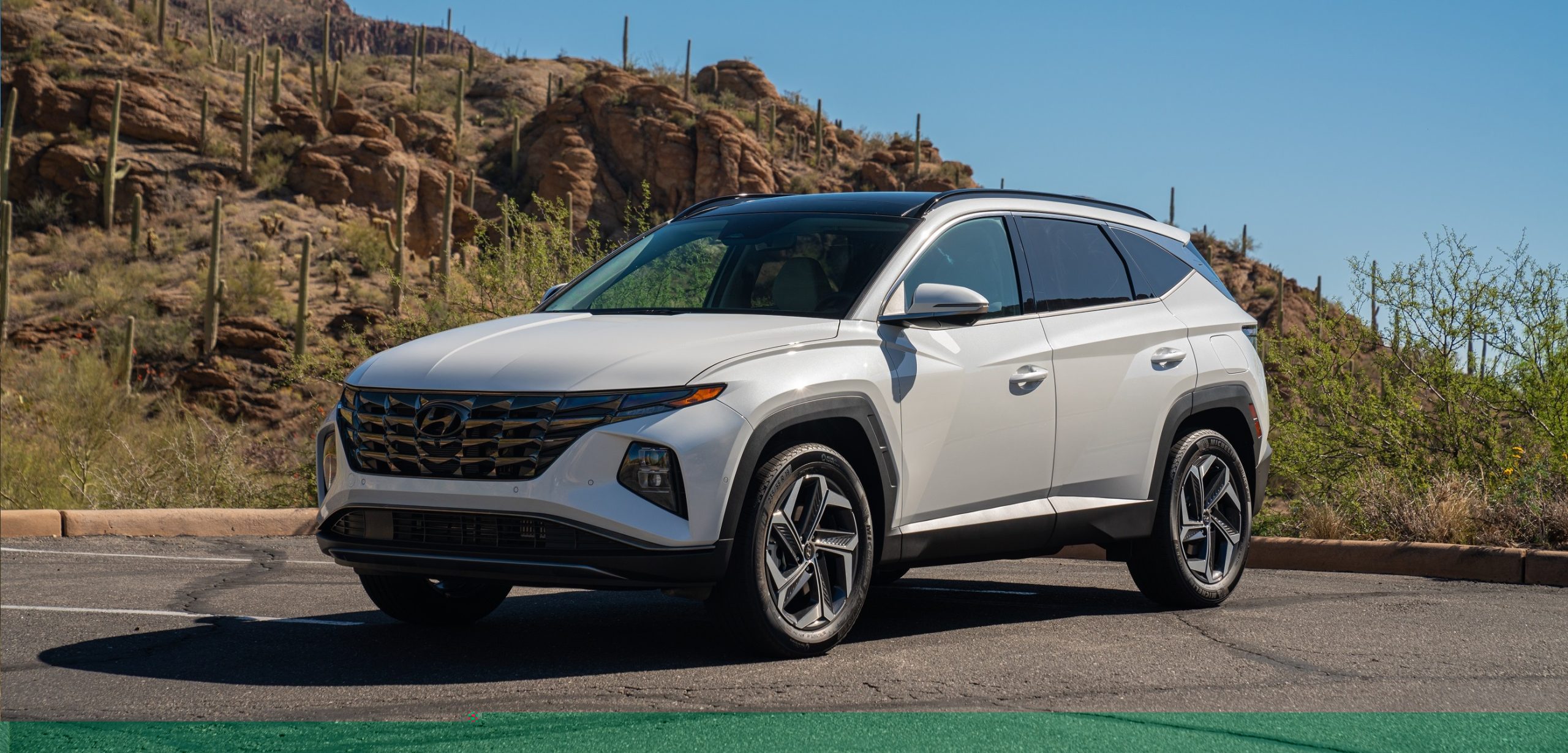
4. Hyundai Tucson Hybrid
The Tucson Hybrid didn’t arrive with the fanfare typically reserved for game-changing models, but its impact has been quietly significant. Rather than being an afterthought or a compliance vehicle, the hybrid version of Hyundai’s best-selling SUV was engineered with care, purpose, and attention to detail.
The hybrid drivetrain pairs a 1.6-liter turbocharged gasoline engine with an electric motor, delivering a combined 226 horsepower and standard all-wheel drive. The result is not only improved fuel economy—often exceeding 38 MPG in real-world mixed driving—but also surprisingly strong performance. Acceleration is brisk, and the electric torque gives the Tucson Hybrid a zippy, responsive character that’s more fun than most people expect from a small hybrid SUV.
The Tucson Hybrid also benefits from the same bold design language introduced with the current generation—angular lines, parametric grille, and unique LED lighting all help it stand out visually in a segment plagued by sameness. Inside, the cabin feels ultramodern, almost concept-car-like in its layout and technology.
There are large digital displays, haptic controls, and an open, airy feel that makes the interior feel larger than it is. Materials are upscale for the class, and noise insulation is top-notch, especially for a hybrid. Hyundai’s tech execution is another strong point: the infotainment interface is smooth and logically arranged, with wireless Apple CarPlay and Android Auto offered in many trims. These features come standard or at a lower price point than rivals, making the Tucson Hybrid an exceptional value proposition.
Perhaps the most unexpected strength of the Tucson Hybrid is its ability to deliver an uncompromised experience. Many hybrids feel like stripped-down versions of their gas-powered counterparts, with handling quirks, smaller trunks, or awkward transitions between power sources. The Tucson Hybrid avoids these pitfalls.
It drives like a normal SUV—only smoother and quieter—and offers all the cargo space, comfort, and capability of the standard Tucson. Factor in Hyundai’s strong reliability record and long warranty, and it becomes clear that this hybrid isn’t just a good eco-friendly choice; it’s a strong all-around performer that surprises with its quality, efficiency, and execution.
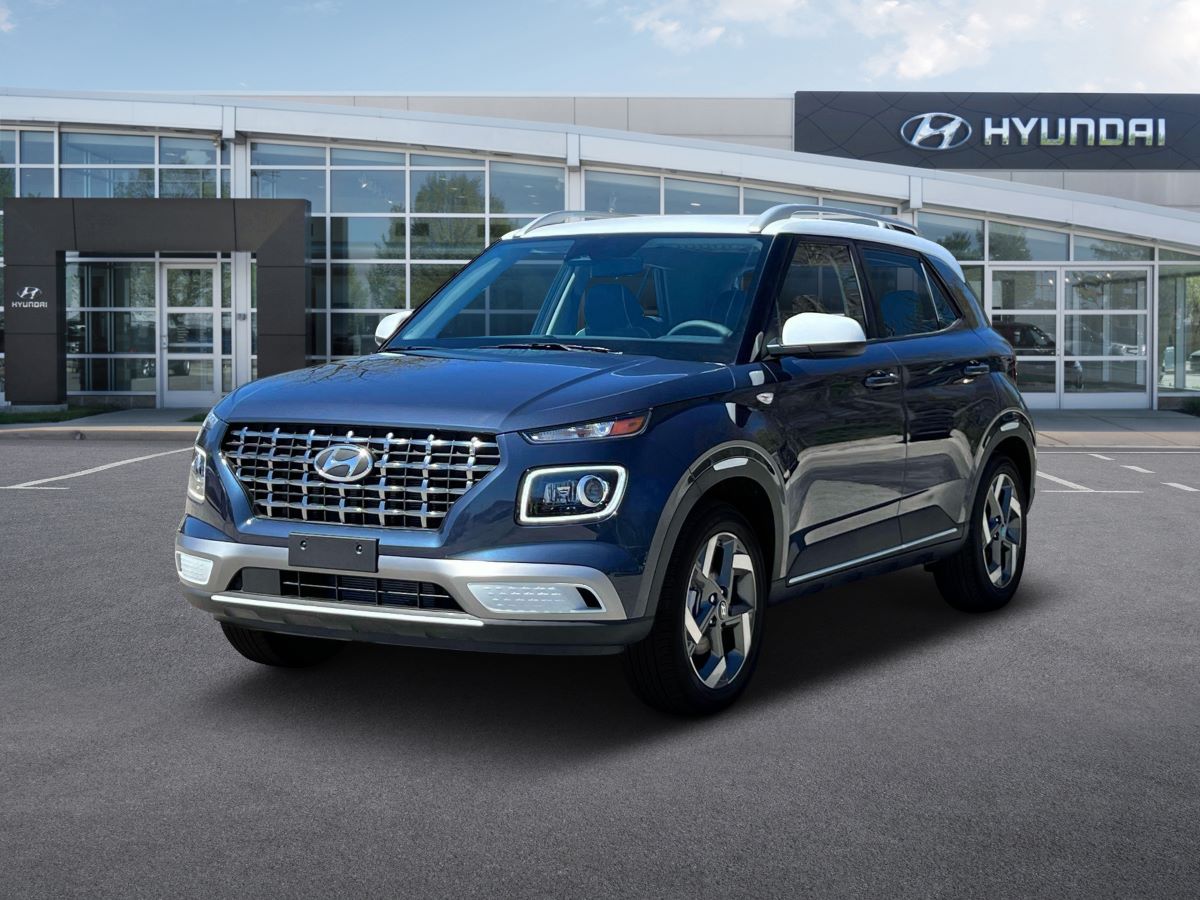
5. Hyundai Venue
Initially seen as a niche city car or a filler at the bottom of Hyundai’s SUV hierarchy, the Venue has proven to be far more capable and compelling than its price tag suggests. This subcompact crossover may lack all-wheel drive and turbocharged engines, but it more than makes up for it with smart design, efficient use of space, and a surprising level of standard equipment.
The Venue’s boxy shape isn’t just stylish—it maximizes headroom and cargo flexibility, making it one of the few tiny crossovers that doesn’t feel claustrophobic. Its small footprint makes it ideal for tight urban streets and parking garages, but it still offers the upright seating position and visibility that SUV buyers crave.
Inside, the Venue punches well above its weight class. Hyundai has cleverly equipped even the base models with an 8-inch touchscreen, Apple CarPlay and Android Auto, and a suite of active safety features including automatic emergency braking and lane-keeping assist.
Higher trims add heated seats, navigation, and nicer materials—yet the cost still undercuts most competitors. The cabin is cheerful, intuitive, and thoughtfully designed. Despite its size, the rear seat can accommodate two adults comfortably, and the cargo area is surprisingly deep with a low load floor. These practical advantages make the Venue feel like a real SUV rather than just a jacked-up hatchback.
From a driving standpoint, the Venue is light, nimble, and easy to maneuver. Its 1.6-liter engine won’t win drag races, but it offers adequate pep for daily driving, and the continuously variable transmission (CVT) has been tuned to feel more natural than many of its peers.
Perhaps more importantly, the Venue delivers strong fuel economy and requires very little maintenance, making it a smart buy for cost-conscious drivers. Its combination of affordability, personality, and genuine everyday usefulness is what makes it unexpectedly strong. Hyundai took what could have been a bare-bones entry and turned it into a cleverly packaged, confident little crossover that brings real value to the table.
5 Hyundai Crossovers That Aren’t As Strong As Expected
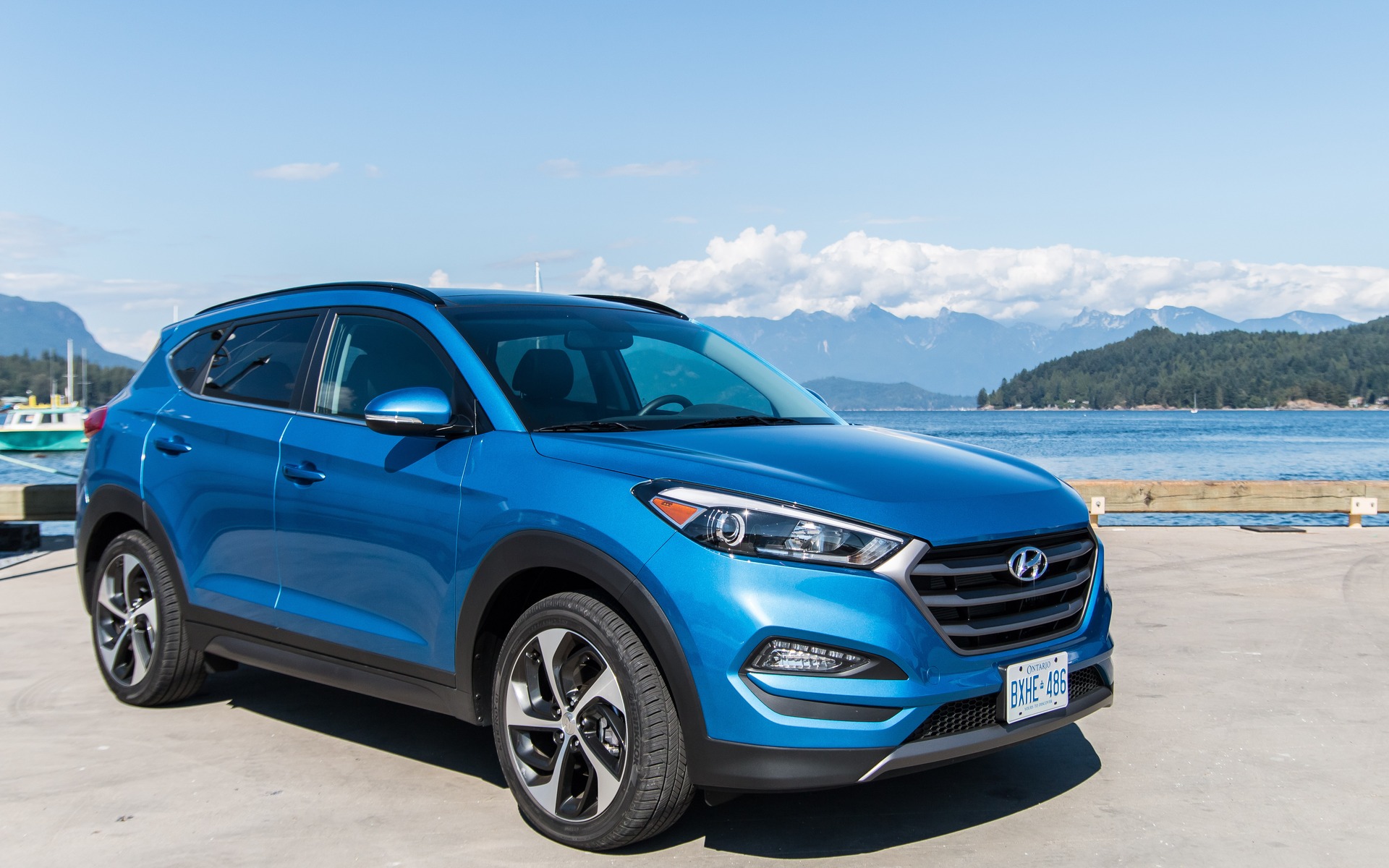
1. Hyundai Tucson (Pre-2019 Models)
Before its 2020 redesign, the Hyundai Tucson was stuck in an identity crisis. It wasn’t that the earlier models—particularly the 2016 to 2018 versions—were outright bad, but they consistently failed to rise above the crowd. Buyers walking into showrooms expected more, especially as Hyundai’s reputation began to grow for offering feature-rich, value-packed cars. But the Tucson simply didn’t evolve at the same pace.
The base engine, a 2.0-liter four-cylinder, was severely underpowered for a crossover of its weight. Even the optional 1.6-liter turbo struggled with responsiveness, suffering from erratic power delivery and a dual-clutch transmission that lacked refinement, especially in stop-and-go traffic. Acceleration felt labored, and highway merging required patience—a letdown in an era where competitors were improving powertrains significantly.
Beyond performance, Tucson’s ride and handling were underwhelming. Hyundai aimed to provide comfort but ended up with a setup that was too soft for precision yet not cushy enough for real luxury. The steering lacked feel, and body roll was noticeable even during modest cornering.
This was further exacerbated by a dated suspension system that transmitted more road imperfections than expected, especially on base models with smaller wheels. While it was relatively quiet on smooth pavement, the Tucson didn’t insulate occupants well from the types of surface chatter and rough patches commonly encountered in everyday driving. It lacked the athleticism of the Mazda CX-5 and the smoothness of the Honda CR-V, making it feel out of step with where the segment was heading.
Inside, the pre-2019 Tucson struggled to match the interior quality and layout sophistication that Hyundai would later master. While the design was clean and functional, it lacked flair and polish. The dashboard materials were hard, the infotainment screens were small by evolving standards, and many controls felt plasticky and uninspired.
Rear seat and cargo space were also less generous than those of key rivals, which limited its practicality for families. Even with Hyundai’s excellent warranty and competitive pricing, the Tucson of this era felt like a placeholder—adequate for basic transportation but not strong enough to genuinely compete with the segment’s leaders. For a brand on the rise, this iteration of the Tucson came across as surprisingly mediocre.
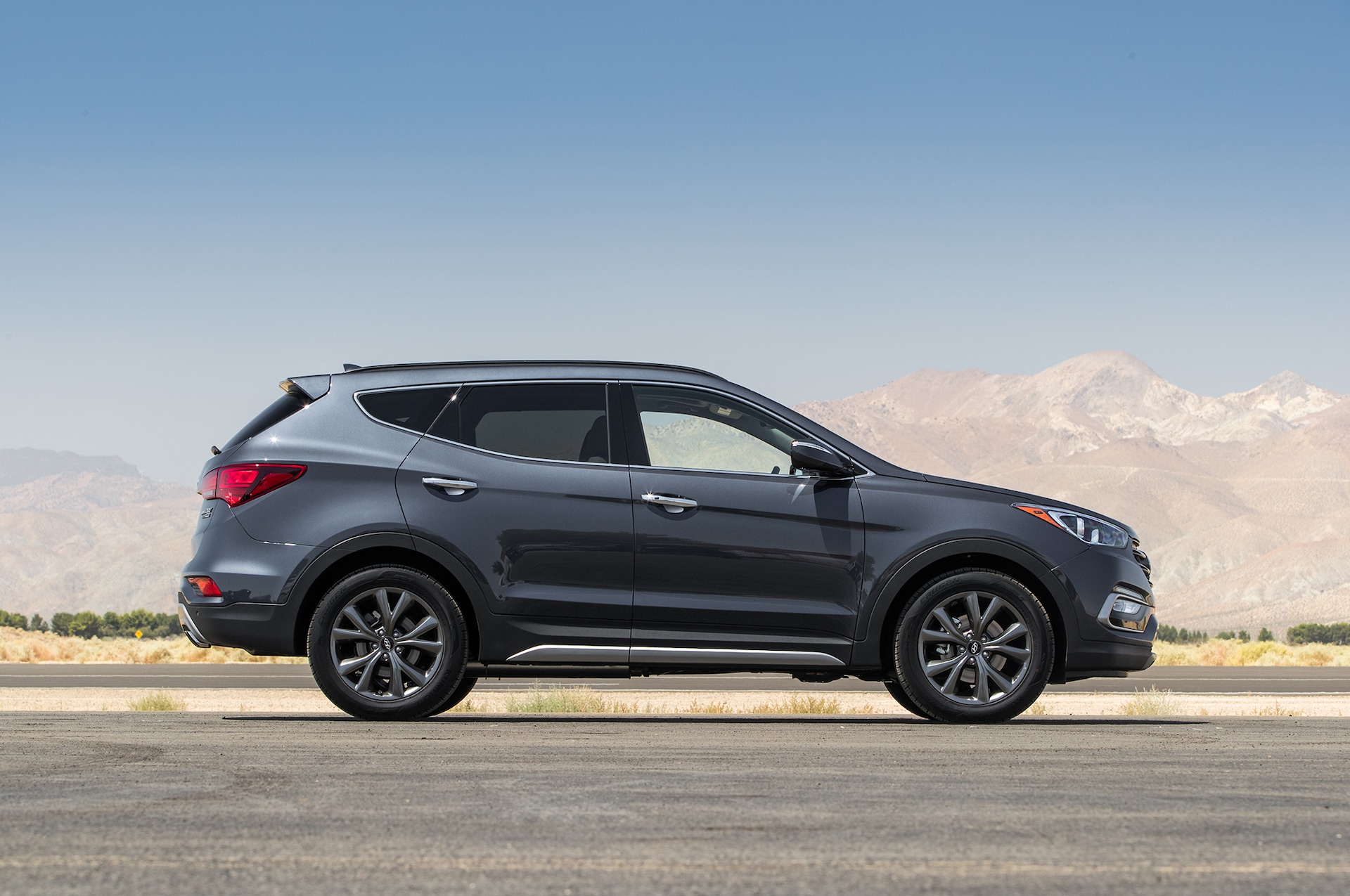
2. Hyundai Santa Fe Sport (2013–2018)
The Hyundai Santa Fe Sport was introduced with the intention of giving buyers a more athletic, two-row alternative to the full-sized Santa Fe, but it never fully lived up to its “Sport” branding. From the start, its base 2.4-liter four-cylinder engine felt underpowered for a vehicle of its weight and size.
It lacked the torque needed for responsive acceleration, particularly when the cabin was full or the car was navigating hilly terrain. The optional 2.0-liter turbocharged engine promised more punch, and while it did improve performance, it brought with it higher fuel consumption and reliability concerns over long-term ownership. The engine often felt taxed under load, and the six-speed automatic transmission, while smooth in light driving, was sluggish to downshift when quick power was needed.
Where the Santa Fe Sport disappointed further was in its road manners. The suspension tuning was soft and aimed for comfort, but it often resulted in a floaty, disconnected feel on highways and backroads alike. Road imperfections were absorbed decently, but the ride lacked composure, and the body control wasn’t on par with rivals like the Ford Edge or Subaru Outback.
Handling was predictable but uninspiring—exactly the opposite of what the “Sport” moniker would suggest. Even in higher trims, the steering was vague and lifeless, offering minimal feedback to the driver. For buyers expecting a fun-to-drive or dynamically engaging SUV, the Santa Fe Sport didn’t deliver. Instead, it came off as middle-of-the-road—comfortable but forgettable.
Interior execution was also a mixed bag. On the surface, the cabin appeared upscale with padded surfaces and metallic accents, but the illusion broke down with closer inspection. The infotainment system was functional but not intuitive, and it lacked the cutting-edge feel Hyundai has since developed.
Rear legroom was decent, but the sloping roofline compromised rear headroom and cargo versatility. While safety features improved later in the model’s run, earlier versions lagged behind the competition in advanced driver aids. The Santa Fe Sport was a vehicle that tried to bridge the gap between compact and midsize segments but didn’t fully satisfy in either. It looked the part but ultimately fell short of Hyundai’s growing promise at the time.
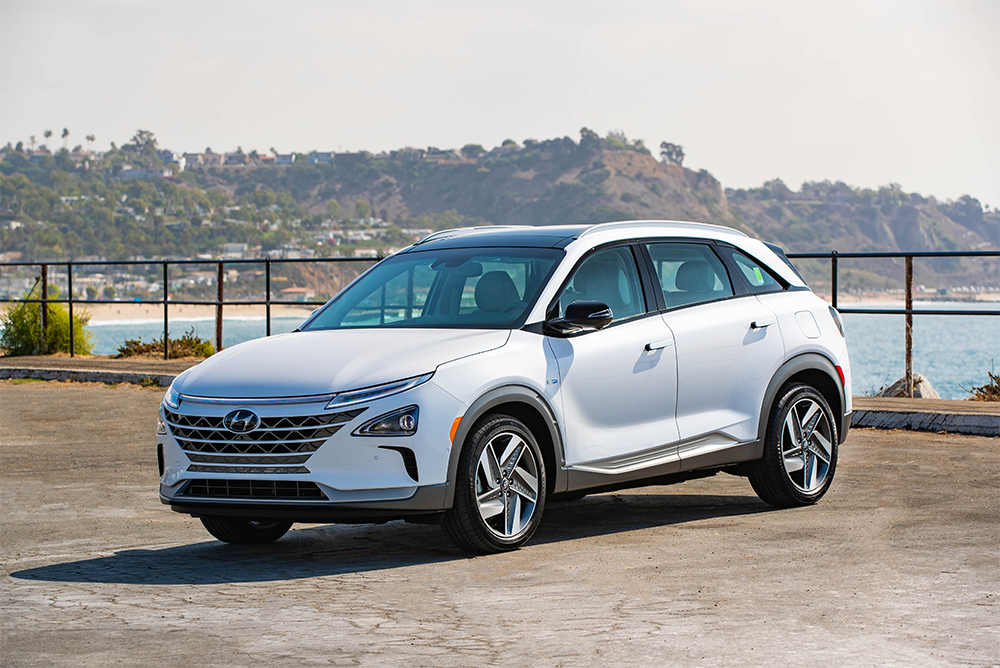
3. Hyundai Nexo
The Hyundai Nexo is one of the most unique entries in Hyundai’s crossover lineup, and it deserves credit for pushing hydrogen fuel cell technology forward. However, it’s precisely that niche status that makes it a disappointment for most consumers.
Despite its high-tech underpinnings and environmentally friendly aspirations, the Nexo is hamstrung by a lack of infrastructure, high costs, and an experience that doesn’t convincingly compete with more conventional electrified SUVs. For starters, hydrogen refueling stations are extremely limited, primarily concentrated in select areas of California, making the Nexo virtually unusable for the vast majority of the country.
As a result, even environmentally conscious buyers eager to ditch gasoline find the Nexo frustratingly out of reach. On paper, the Nexo performs respectably with a smooth and quiet ride, but it lacks the torque-rich, immediate power delivery that buyers have come to expect from EVs like the Tesla Model Y or Ford Mustang Mach-E.
Its 161-horsepower output is adequate but uninspiring, and its real-world performance feels sluggish for a vehicle that’s priced near luxury territory. The Nexo rides comfortably and handles daily driving tasks with ease, but it doesn’t offer any dynamic edge or sense of engagement.
It’s not particularly fun to drive, and compared to fully electric crossovers that cost less, its performance feels like a letdown. It also suffers from an identity crisis: too expensive and high-tech to be mainstream, yet not compelling or practical enough to truly serve as a luxury alternative.
The interior is perhaps the most compelling aspect of the Nexo. It boasts a futuristic design, with premium materials, a wide touchscreen layout, and an impressive array of driver-assist features. Yet these strengths only highlight its broader issues. With a price tag that can exceed $60,000 and a highly limited fueling network, buyers are left wondering whether they’re investing in the future or gambling on a concept that hasn’t caught on.
Even Hyundai seems to have shifted more attention to battery-electric vehicles, casting further doubt on the Nexo’s long-term viability. In a market where electric options are proliferating and improving rapidly, the Nexo feels more like a technological curiosity than a well-rounded SUV. It’s unexpectedly weak, not because of poor engineering, but because the execution doesn’t align with the realities of everyday ownership.

4. Hyundai Veracruz
The Hyundai Veracruz was a bold move when it launched in 2007, aiming to bring Hyundai into the premium three-row crossover market. At the time, it was marketed as a near-luxury SUV with a smooth ride, refined V6 engine, and a quiet, comfortable interior.
On paper, it had all the makings of a breakthrough model. However, the Veracruz never gained significant traction, and looking back, it becomes clear why. The design was conservative to the point of being bland. While competitors were offering bolder, more confident styling cues to attract buyers, the Veracruz’s soft, indistinct shape left it looking like a generic rental car.
It lacked a visual identity, which is crucial in the competitive large SUV segment. Buyers simply didn’t connect with it. Performance was competent but not compelling. The 3.8-liter V6 engine was smooth and reasonably powerful, but fuel efficiency was poor, and there was little sense of excitement or urgency in its power delivery. Handling was tuned for comfort, which was fine on highways, but around corners, the vehicle felt heavy and ponderous.
Steering feel was minimal, and road feedback was almost nonexistent. Compared to more dynamic rivals like the Mazda CX-9 or even the Honda Pilot, the Veracruz didn’t provide an engaging driving experience. It was acceptable, but it didn’t shine—and in a segment where family buyers are looking for both space and substance, that wasn’t good enough.
Additionally, it lacked a clear competitive edge—it wasn’t the most luxurious, the most affordable, or the most efficient, so it often got overlooked entirely.
Inside, the Veracruz offered decent space and comfort, but again, it fell short of delivering the premium feel it aspired to. The dashboard design was uninspired, and while build quality was acceptable, the materials used didn’t reflect the SUV’s ambitious pricing. Tech features, even at the time, felt a step behind what competitors were offering. By the end of its run in 2012, the Veracruz was largely forgotten in the marketplace.
Hyundai didn’t have the brand strength at the time to position it as a premium option, and the vehicle itself wasn’t distinctive enough to stand on its own merits. It served as a necessary step in Hyundai’s evolution but ultimately was not a strong product by the standards it set for itself—or the competition.

5. Hyundai Kona EV (Early Models)
When Hyundai launched the Kona Electric, it seemed like a smart move: take the successful, stylish Kona and give it a zero-emission powertrain to compete in the burgeoning EV segment. Early expectations were high, especially with an estimated range exceeding 250 miles—impressive for a subcompact electric SUV.
But while the Kona EV succeeded in some respects, early models were marred by inconsistencies that made ownership less rewarding than anticipated. First and foremost, there were significant concerns with battery performance and longevity. Some users reported degraded battery health far earlier than expected, while others encountered glitches in range estimation and software reliability. These issues were serious enough to prompt Hyundai to issue recalls and updates, but the damage to the model’s reputation lingered.
Charging was another area of weakness. Although the Kona EV was compatible with DC fast charging, the charging speed was slower compared to newer rivals, and the car’s thermal management system wasn’t always up to par. In hot climates, repeated fast charging could trigger battery protection protocols that drastically slow charge times.
These hiccups made the vehicle less convenient for long-distance driving, ironically undercutting the one area (range) where it was supposed to excel. Moreover, the early charging infrastructure wasn’t always reliable, meaning owners had to contend with both vehicle limitations and broader systemic issues. While this wasn’t entirely Hyundai’s fault, it contributed to a less-than-stellar ownership experience.
The interior of the Kona EV was largely identical to the gas version, which meant that it carried over both strengths and weaknesses. While the layout was simple and well-appointed for the price, space was tight, especially in the rear seats and cargo area. Unlike some other EVs that offered additional storage due to the lack of a traditional powertrain, the Kona EV didn’t significantly repackage its space to make better use of the electric architecture.
Add to that its relatively high price tag—driven up by limited availability and federal tax credit changes—and many buyers felt they weren’t getting a complete return on their investment. While newer versions have improved, the early Kona EVs were a reminder that electrification alone doesn’t make a vehicle strong. Execution matters, and in those early years, Hyundai’s EV ambitions slightly outpaced its real-world performance.
Also Read: 10 Cars With Best Dash Designs That Bring Innovation
Hyundai’s crossover lineup tells a story not only of technological advancement but also of brand reinvention. What began as a manufacturer known for economy cars has now matured into a global force that builds vehicles capable of competing with the best in their respective classes.
However, that journey has not been linear. As we’ve explored in this analysis, Hyundai’s crossover models vary widely in their execution, appeal, and long-term value. Some models have far exceeded expectations, becoming not only strong performers in their segments but also raising the bar for what consumers can expect from an affordable SUV. Others, despite their bold promises or innovative technologies, simply didn’t deliver the complete package.
Among the strongest in Hyundai’s stable are the Kona, Santa Fe (2020–2022), Palisade, Tucson Hybrid, and Venue. These models embody the new face of Hyundai—bold design, thoughtful engineering, and feature-rich interiors that rival more expensive alternatives.
What makes them unexpectedly strong is not just their affordability or spec sheets, but the way they overdeliver in real-world use. Whether it’s the surprisingly dynamic performance of the Kona, the refined luxury of the Palisade, or the urban versatility of the Venue, these crossovers prove that Hyundai can craft vehicles that feel a class above their price tags. Each of these models reflects a different kind of strength—drivability, efficiency, comfort, or technology—and together they showcase Hyundai’s maturing design and engineering prowess.
In contrast, models like the pre-2019 Tucson, Santa Fe Sport, Nexo, Veracruz, and early Kona EVs remind us that innovation and ambition don’t always lead to success. These vehicles fell short for various reasons—underpowered drivetrains, uninspiring interiors, limited availability, or technology that was ahead of its time but behind in execution.
That doesn’t mean these models were failures; rather, they represent the transitional phases in Hyundai’s journey. They serve as a reminder that rapid development cycles and experimentation can sometimes result in uneven products. However, they also paved the way for improvements that followed. If Hyundai hadn’t tried to break into premium SUVs with the Veracruz or experiment with alternative fuels in the Nexo, it might not have achieved the current success of the Palisade or the Ioniq lineup.
For consumers, the key takeaway is this: Hyundai’s crossover offerings are as diverse as their buyers. Some models are surprisingly excellent, punching far above their segment and price. Others are better left to specific niche markets or avoided altogether if performance and practicality are your priorities.
Doing the homework—understanding not just the current model year but also the vehicle’s evolution—is essential. Hyundai is no longer a brand you buy just because it’s cheap; it’s a brand you can buy because it’s good. But like any automaker, some models shine more than others.
In an era where crossovers dominate the market, Hyundai has proven it can build some of the most competitive options out there. Just make sure you know which ones deserve a closer look—and which ones you may want to walk past on the showroom floor.
